
|   |

|   |
A brilliant portrayal of Rushikas of the Vedic time in Tejaswini - Dr. S.D. Desai e-mail: sureshmrudula@gmail.com June 26, 2022 There were palpable expectations among the educated audience that filled the Gujarati Sahitya Parishad Hall, Ahmedabad, nearly to its capacity on June 19. They were not fully familiar with the Rushikas (female rishis), of the Vedic time to be portrayed in Bharatanatyam by dancer Dolly Bhargav Desai's dance drama Tejaswini. Through the narrative interspersed with dialogue she had diligently developed, choreography she had imaginatively created and dramatic touches she had inserted in the Rushikas' portrayals along with recorded music, the viewers' expectations of knowing the women of multiple talents were to a large extent, even if not fully for those discerning, met. Music is characteristically integral to the production. Ruchas - a singing recital of mantras - are presented in the performance in a style close to its authentic version by Saurabh Bhatt and Jay Pandya and songs are rendered by Manasi. Chief contributors to the musical inputs, the choreographer reveals, are Tanmay Mishra and Srinivasan in consultation with her. Tanmay played the mohan veena and Srinivasan the mridangam. All this with the pleasing images of the dancers and those flashed on the backdrop created an ambience of the time. It was highlighted by Neerav and Harry with lights designs. 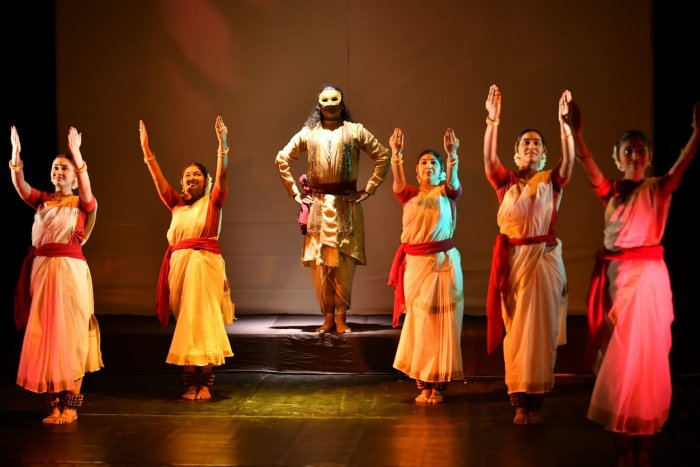 Hiranyagarbha Sookta The choreographer-director had a scholarly preparatory approach. She consulted Sanskrit scholars Dr. Vijay Pandya, Dr. Preety Pancholi and Dr. Ravindra Khandwala. While Dr. Pandya familiarized her with distinguishing qualities of gods like Agni and Indra besides Vedic literature in general and Dr. Khandwala helped understand the time and its literature, it was Dr. Pancholi who provided the pith of the content of Tejaswini - the contours of the Rushikas portrayed, relative Sooktas, the areas of their empowerment and the dialogue, like the one Nadi had with Rishi Vishwamitra, used in the script. It is all in her significant book Vedmaa-n Rushikao, based on her doctoral thesis. Dolly Desai selected performable Rushikas, their significant words and relevant episodes. The stage presentation of Tejaswini is basically meant to be an authentically aural and visual interpretation of the calibre and influence of the powerful Vedic Rushikas at a time when women remain vulnerable and need to be empowered. The focus has been on five out of multiple times many. The dance drama promisingly takes off with the Hiranyagarbha Sookta, the widely known hymn in praise of the omnipresent Creator and what He has endowed the universe with. The intangible form of Hiranyagarbha (Kalrav) is seen emerging with only leg movements in tune with rhythmic syllable patterns. When a group of dancing girls (Pavitri, Vedanshi, Tanmayi, Zeel, Prarthana, Neti) ushers in the Rushikas one after another with a stylized arghya, a sense of natural luxuriance the earth is blessed with gets reinforced. A slight disappointment creeps in for the viewers' expectations. The girls making the offering endearingly are still at an early stage of learning dance. Soon enough however excitement replaces it at the pragatya of the first Rushika, Ghosha, in her neat and dignified portrayal by Arpita Dhagat, a Bharatanatyam dancer with theatre training at NSD. Her dance with mudras, footwork, eyes and body movement is matched by her timed verbal enunciation characterized by tone, pauses and modulation. She keeps up interest in all her portrayals and elevates the quality of the dance drama, putting the Rushikas as it were on a pedestal. The episodes depicted also give an idea of the social milieu of the time. 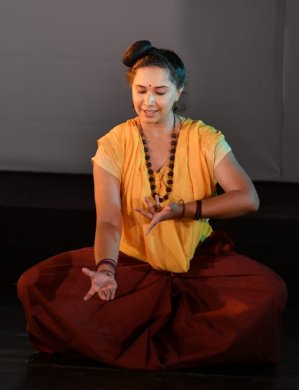 Ghosha 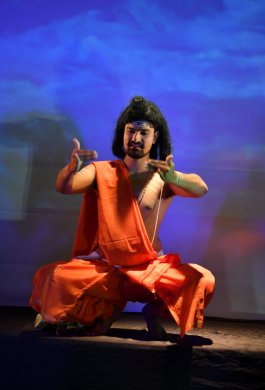
Rishi Vishwamitra 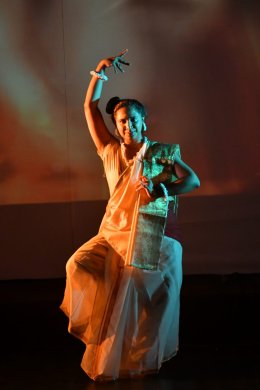
Vagambhrini 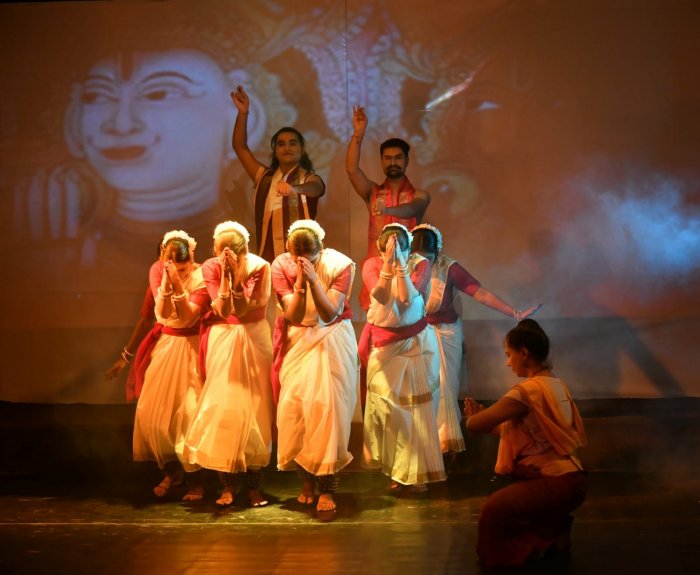 Ashwinau chariot and Ghosha King Kakshivan's daughter Ghosha sings the praises of gods Ashvin-dwaya, seeks marital happiness and prays for the strength to annihilate the adversary. Rushika Vishwavara extols the power of God Agni, urges him to defeat enemies' designs and seeks marital bliss. The choreographer here visualizes the ritual of Yagnya. Nadi-Vishwamitra Samvaad reveals Rushika Nadi (River), ever flowing for people's welfare, and Brahmarishi Vishwamitra (Jay) as equals and respectful of each other. On his request, she makes way for him for a while and resumes flowing for her noble purpose. Rushika Vaga-ambhrini, who has composed Devi Sookta, is also an inspiring incarnation of Brahma, independent and a powerful source of knowledge. With physical prowess, Rushika Vishpala used to participate in wars like a brave soldier. When she loses her leg in a battle, it is replaced with an artificial iron leg and she is ready to go to war again. Select visualizations add to the viewable quality of the production. It is difficult to say this of the projection of the word and sound in it, which exceptions apart keeps getting amplified with an echoing effect. The text of the Vedas is dhwani-rich and metaphoric with poetry at its highest. Its undertones reveal meanings (read 'universal truths') and leave much more tantalizingly unstated. Even the coordinating words of the Sutradhar (Vishwajit) in Hindi need to be low pitched and more slow paced with the right modulation and inbuilt silences for them to sink in. 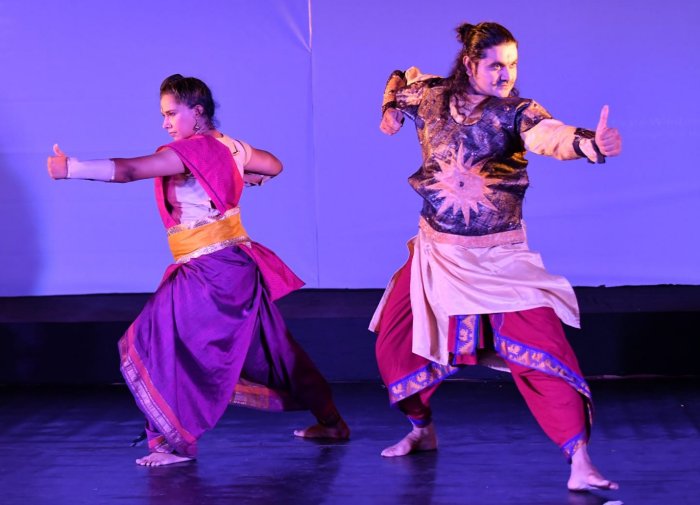 Vishpala with King Khel By the way, was this performance of Tejaswini a grand rehearsal for its presentation in Ujjain in a couple of days?! 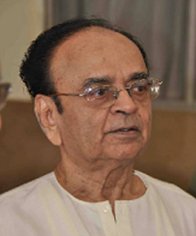 Dr. S.D. Desai, a professor of English, has been a Performing Arts Critic for many years. Among the dance journals he has contributed to are Narthaki, Sruti, Nartanam and Attendance. His books have been published by Gujarat Sahitya Academy, Oxford University Press and Rupa. After 30 years with a national English daily, he is now a freelance art writer. |